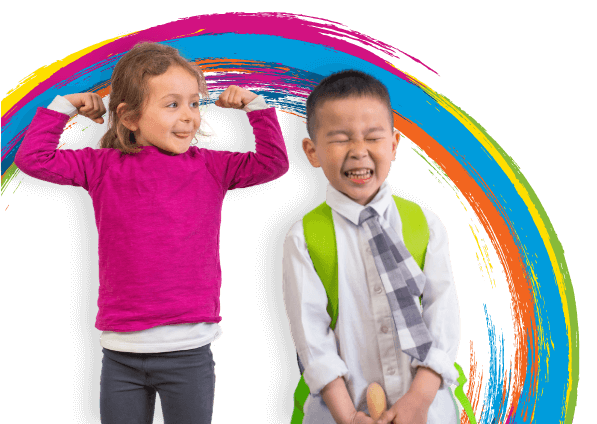This blog is part two in a discussion on language development in children and how they can easily learn a second, third – even fourth language. In this second part of our discussion, we’ll start off by looking at the importance of exposure to language.
Input = Output
You may remember this formula from Part I, which says that if you want your child to be bilingual, you must expose him or her to multiple languages as much and as often as possible.
Perhaps there is a babysitter who can speak to them in his or her native language? Maybe there is a nearby bilingual kindergarten. And let’s not forget about grandma and grandpa: If they were born in another country, perhaps they can speak to the child in their native tongue?
Providing multi-language exposure is giving your child a gift for life. And that gift involves far more than mere language – you are actually developing their brain’s plasticity, which means their ability to change and adapt, and we all know how important that is. Quite simply, nothing develops the brain more than learning another language, or two, or even three. In fact, studies have shown that the benefits of learning numerous languages are multiple, from improving concentration and memory, to staving off dementia, later in life.
Correcting mistakes – how and when
This is a big issue for a lot of parents, and I’m often asked about the proper way to correct a child who is learning to speak. There is no one rule for every child or every circumstance, but a general guide, especially for the early years, would be to pay far more attention to what goes into your child, than what comes out. In fact, if you make sure the right stuff goes in, then eventually, that is what’s going to come out
Parent-child connection
The last thing we’ll look at in this post is the importance of the adult-child relationship.
Early language development happens when there is trust, love and connection between you and the child. After your baby is born, a remarkable interplay begins to happen: You speak and the baby responds by imitating you. You then show empathy by imitating the child’s expressions. You don’t even realize that you are doing it but you are, and this continues, back and forth, building the connection between you, which supports their language development.
As the child gets older, the relationship develops, and this interplay of facial expressions transforms into verbal communication. And here is where reading to the child can take on several purposes. If you don’t become too become fixated to what’s printed on the page, then reading time can actually become a springboard into rich conversations.
When I read to my granddaughter, Ria, she’s got a million questions. I was recently reading to her a lovely story about a mouse that was so small, no one else in the jungle ever noticed he was there. It was a marvellous book, but what really captured Ria were the bandages on the mouse’s tail. What had happened to his tail, she wanted to know. I explained that the elephant had trodden on its tail and the zebra had sat on it. She must have asked me the same question dozens of times because that is what intrigued her. And even had her questions borne no relevance to the story, it wouldn’t have mattered – because she was engaged with the book, and worried about what was going to happen, and relating to it from her own life. Most importantly, it became a catalyst for our conversation, through which her ability to understand and express language was being nourished.
Conclusion
It is truly never too early to begin introducing more than one language to your child. The earlier the better, because the window for learning a language at mother-tongue level stays open only until the age of seven. By doing so, you are helping to develop your child’s brain for life, and in a way that extends well beyond mere language learning. You are helping them to become more tolerant of others, and to develop the capacity for richer concepts, which will accompany them all the days of their life.
Millions of children have learnt English with the unique Helen Doron methodology. Find out more at www.helendoron.com







